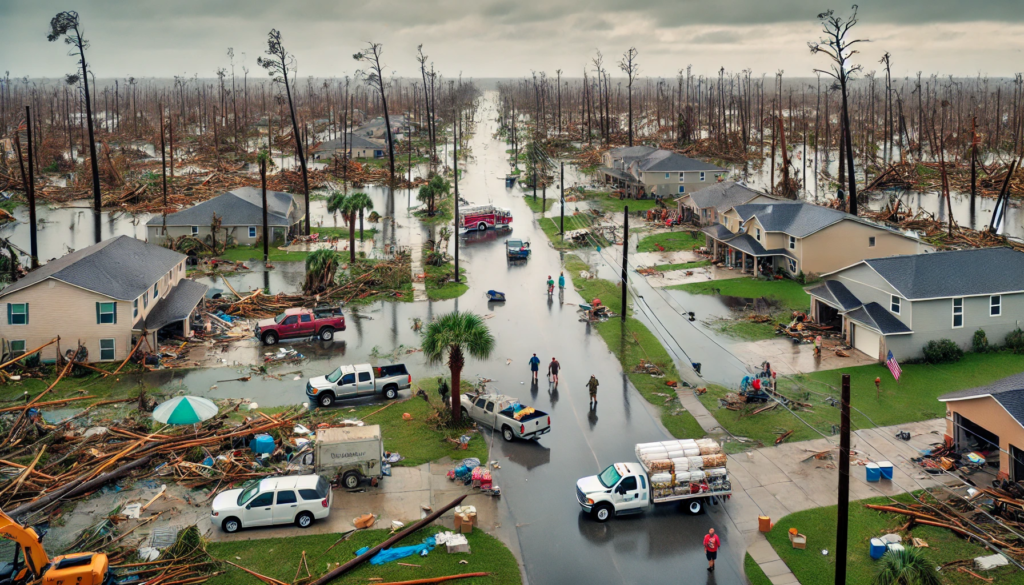
Hurricane Milton tore through Florida as a Category 3 storm, leaving extensive damage and a challenging recovery process in its wake. Over 1.5 million people remain without power, while tornadoes and floods devastated areas like Tampa Bay and Sarasota. Florida issued a record 126 tornado warnings, and multiple tornadoes caused significant destruction, including an EF-3 tornado in St. Lucie County, which left six dead. Federal agencies are mobilizing to restore essential services, but fuel shortages and blocked roads have slowed progress
Tornado Outbreak and Power Outages
Before Milton even made landfall, its outer bands triggered an unprecedented tornado outbreak, with dozens of tornadoes reported across central and southern Florida. This outbreak caused widespread destruction in communities like West Palm Beach and Palm Beach Gardens, where an EF-3 tornado obliterated several neighborhoods. The National Weather Service issued a record-breaking 126 tornado warnings in one day. Among the hardest-hit areas, St. Lucie County experienced severe tornado-related damage, with multiple homes destroyed and people trapped underneath debris.
Meanwhile, power outages remain one of the most significant challenges in the wake of Hurricane Milton. Roughly 1.5 million people are still without power, including nearly a million residents in the Tampa Bay region, where downed trees and power lines blocked access to critical infrastructure. The power outages have further complicated the recovery, as fuel distribution has been disrupted, leading to widespread gas station closures.
Fuel Shortages and Government Response
As Florida grapples with the aftermath, fuel shortages have become another major hurdle. Around 75% of gas stations in the Tampa Bay area remain closed or without fuel. Governor Ron DeSantis announced that the state is working to set up emergency fuel depots to provide free fuel to affected residents. Each person can receive up to 10 gallons of fuel at these depots, aimed at alleviating the logistical challenges posed by power outages and transportation blockages.
Federal Recovery Efforts Underway

The Federal Emergency Management Agency (FEMA) and local authorities have mobilized over 10,000 personnel to assist in recovery efforts. Rescue operations and emergency aid distribution continue as officials assess the damage across the state. Despite the extensive damage, officials believe that the worst-case scenario was averted, thanks in part to evacuation efforts and emergency preparedness measures.
Looking Ahead
The road to recovery in Florida will be long, with infrastructure repairs, power restoration, and community rebuilding efforts expected to take weeks, if not months. Officials continue to monitor rivers that are slow to recede after record-breaking floods. Meanwhile, the state and federal authorities are urging residents to stay safe and follow official guidelines during the recovery phase.






